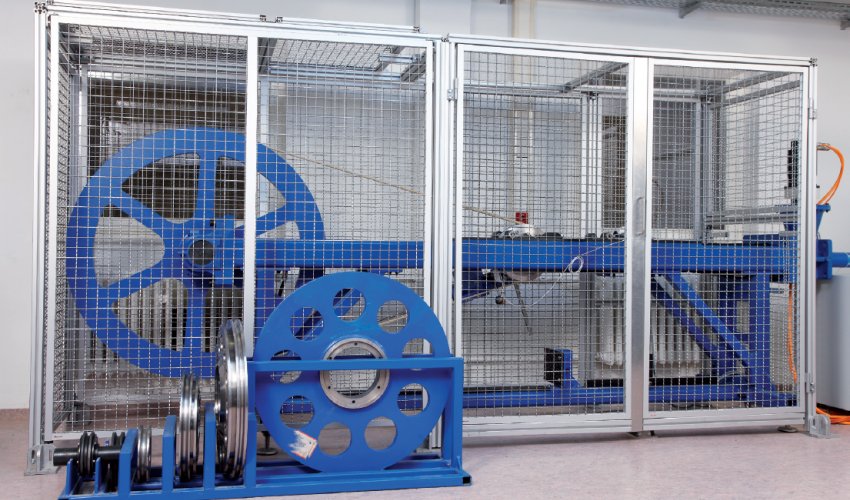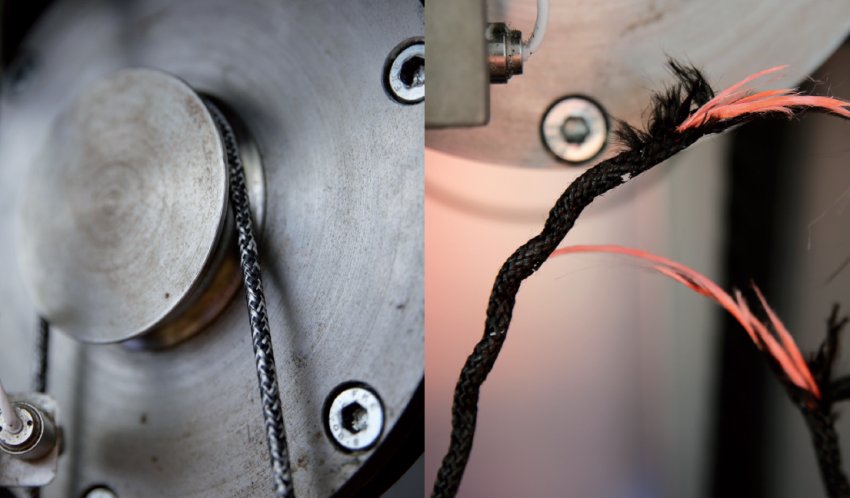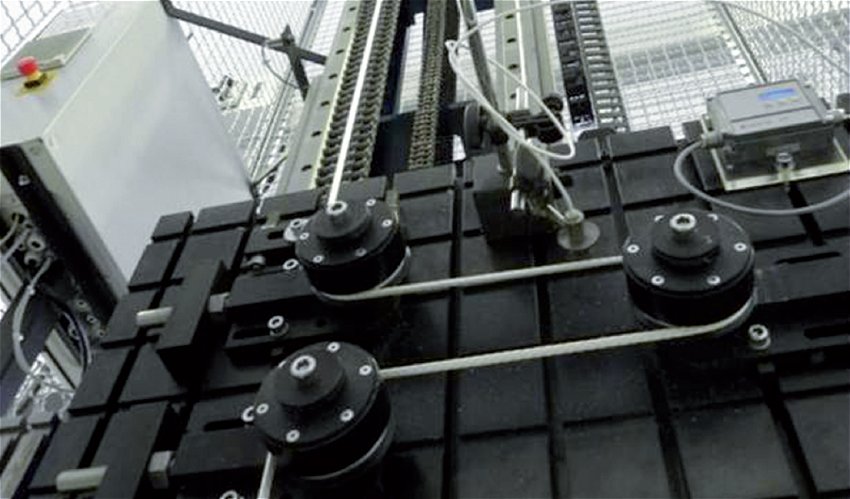Bend test
| Single bending Load range 100 kN | |
|---|---|
 | |
| Tester | WBM 180, in-house development |
| Application | Testing of fibre ropes up to 16 mm diameter with rope tensile forces up to 100 kN |
| Parameter |
|
| Single bending Load range 12 kN | |
|---|---|
 | |
| Tester | WBM 25, in-house development |
| Application | Testing of fibre ropes of 3 and 6 mm diameter with rope tensile forces up to 12 kN |
| Parameter |
|
| Counterbending | |
|---|---|
 | |
| Tester | In-house development |
| Application | Testing of fibre ropes from 4 to 6 mm diameter with test loads up to 30 kN |
| Principle | Passive rope and active sheave (the test sheave arrangement is moved over the standing rope) |
| Parameter |
|
| Multi-zone bending | |
|---|---|
 | |
| Tester | Tester DEP Engineering, in-house further development |
| Application | Testing of fibre ropes preferably with 6 mm diameter |
| Parameter |
|

